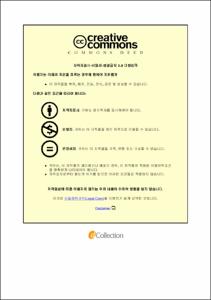Clinical and microbiological characteristics of hospital-acquired methicillin-resistant Staphylococcus aureus bacteremia caused by community-associated PVL-negative ST72-SCCmecIV strain
- Abstract
- Background: ST72-SCCmecIV, a community-associated methicillin-resistant Staphylococcus aureus (CA-MRSA) strain in Korea, originated in the community and has been spreading in the healthcare settings. Herein, we describe the clinical and microbiological characteristics of patients with hospital-acquired MRSA bacteremia (MRSAB) caused by community-associated strains.
Methods: We analyzed hospital-acquired MRSAB cases caused by ST72-SCCmecIV using a prospective cohort of patients with SAB at in a tertiary hospital in Korea from July 2008 to December 2018. We compared the clinical and microbiological characteristics of ST72-SCCmecIV with ST5-SCCmecII, a representative hospital-associated genotype strain.
Results: Of the 1782 S. aureus bacteremia (SAB) cases, 629 (35.3%) were hospital-acquired MRSAB. Of the 629 isolates, 431 (68.5%) were ST72-SCCmecIV and 152 (24.2%) were ST5-SCCmecII. Patients with ST72-SCCmecIV were younger than those with ST5-SCCmecII and less likely to have a history of recent surgery, antibiotic treatment, nasal MRSA colonization, and central venous catheter placement. Compared with ST5-SCCmecII, ST72-SCCmecIV isolates were more likely to have vancomycin MICs ≤ 1.0 mg/L (p < 0.001). Osteoarticular infection as the primary site infection [7.2% (11/152) vs. 1.4% (6/431)] was more common in patients with ST72-SCCmecIV. There were no significant differences in the rate of recurrence (≤ 90 days), persistent bacteremia (≥ 7 days), and 30- and 90-day mortality rates between the two groups.
Conclusion: After adjusting for potential confounders, ST72-SCCmecIV in hospital-acquired infections was significantly associated with osteoarticular infections. Mortality rates between the ST72-SCCmecIV and ST5-SCCmecII groups were not significantly different.
|연구 배경: SCCmec type4, Sequence type 72 (ST72-SCCmecIV)는 한국의 대표적인 지역사회 관련 methicillin-resistant Staphylococcus aureus (community-associated MRSA, CA-MRSA) 균주이고, Panton-Valentine leucocidin (PVL) 음성이라고 알려져 있으나, 그 임상적 특징에 대하여는 잘 알려져 있지 않다. ST72-SCCmecIV에 의하여 발생한 병원 내 혈류 감염의 임상적 특징, 사망의 위험인자, 예후를 대표적인 병원관련 균주 (HA) ST5-SCCmecII MRSA와 비교하여 알아보고자 하였다.
연구 방법: 2008년 7월부터 2018년 12월까지 서울아산병원에서 성인 환자 중 S.aureus bacteremia가 확인된 환자들을 전향적으로 등록하여 90일 동안 관찰하는 코호트를 구축하였고, 이 코호트에서 ST72-SCCmecIV와 ST5-SCCmecII 균주에 의한 병원내 혈류 감염 증례만을 최종 선정하여 후향적 연구를 진행하였다.
연구 결과: 총 1782 건의 S.aureus bacteremia (SAB)가 있었고, 629 건이 병원관련 MRSA 혈류감염에 해당하였다. ST72-SCCmecIV는 432 건으로 68.5%를 차지하였고, ST5-SCCmecII가 152 건으로 24.5% 였고, 이들 583 건이 최종적으로 분석대상이 되었다. ST72-SCCmecIV MRSA 환자들은 ST5-SCCmecII MRSA 환자들에 비교하여 연령 중앙값이 낮았으며, 최근 수술력, 최근 항생제 사용력, 중심정맥관을 가지고 있는 경우, 비강 집락 양성인 경우가 유의하게 적었다. ST72-SCCmecIV MRSA에서 Vancomycin MIC가 더 낮은 경향을 보였고, MIC 1.0 mg/L의 비율이 ST72-SCCmecIV MRSA에 비하여 유의하게 높았다 (p <0.001). ST72-SCCmecIV 군에서 골관절 감염의 빈도가 유의하게 높았다 [7.2% (11/152) vs. 1.4% (6/431)]. 두 군 간 재발, 지속성 균혈증 (≥ 7일), 30일 사망률, 90일 사망률에는 유의한 차이가 없었다.
연구 결론: 병원내 MRSAB에서 ST72-SCCmecIV MRSA는 ST5-SCCmecII MRSA에 비교하여 골관절 감염을 더 자주 일으키고, 재발, 지속성 균혈증 (≥ 7일), 30일 사망률, 90일 사망률에는 유의한 차이가 없다.
- Issued Date
- 2020
- Awarded Date
- 2021-02
- Type
- Dissertation
- Alternative Author(s)
- Yun Woo Lee
- Affiliation
- 울산대학교
- Department
- 일반대학원 의학과의학전공
- Advisor
- 김양수
- Degree
- Master
- Publisher
- 울산대학교 일반대학원 의학과의학전공
- Language
- eng
- Rights
- 울산대학교 논문은 저작권에 의해 보호받습니다.
- Appears in Collections:
- Medicine > 1. Theses (Master)
- 파일 목록
-
-
Download
 200000363681.pdf
기타 데이터 / 527.99 kB / Adobe PDF
200000363681.pdf
기타 데이터 / 527.99 kB / Adobe PDF
-
Items in Repository are protected by copyright, with all rights reserved, unless otherwise indicated.